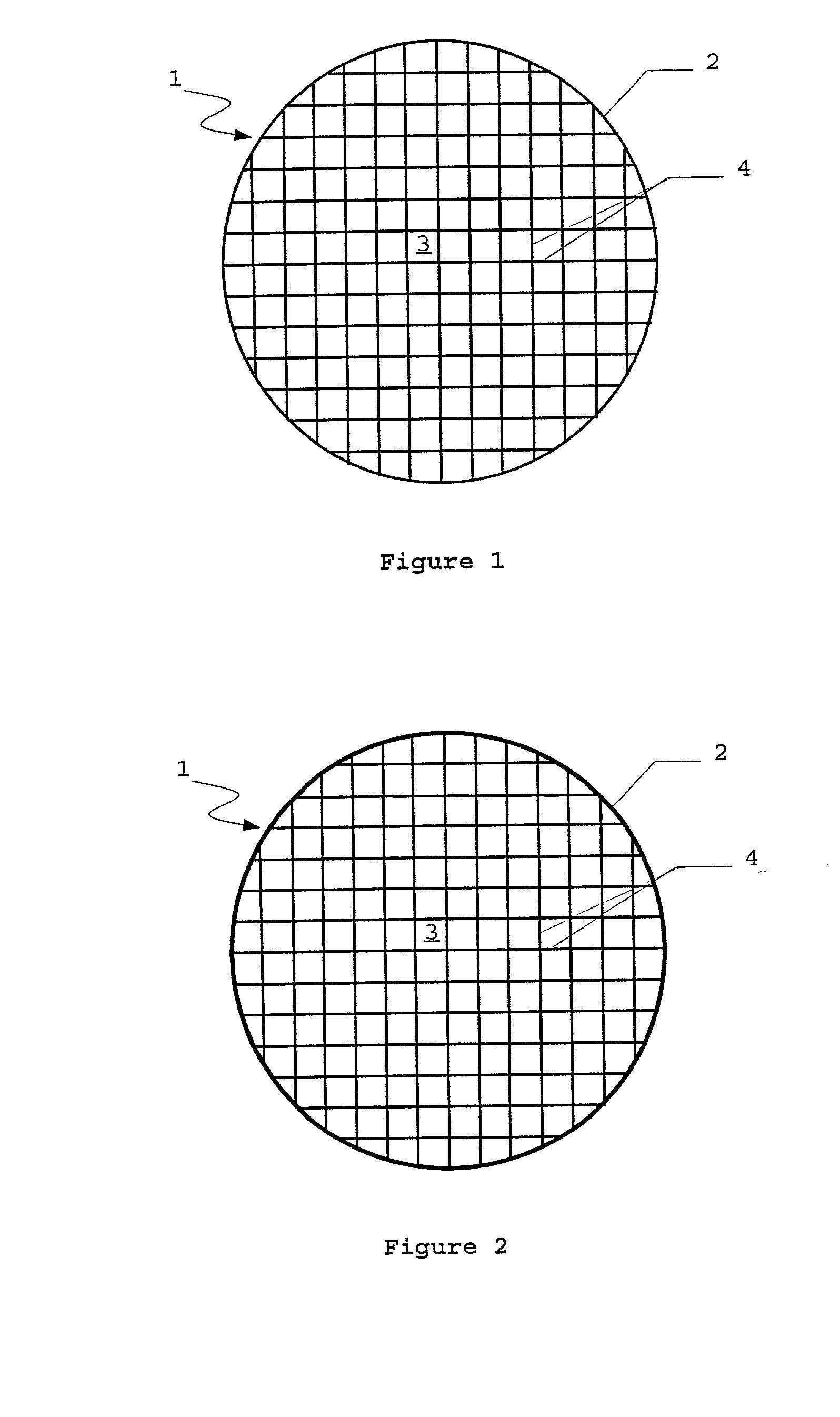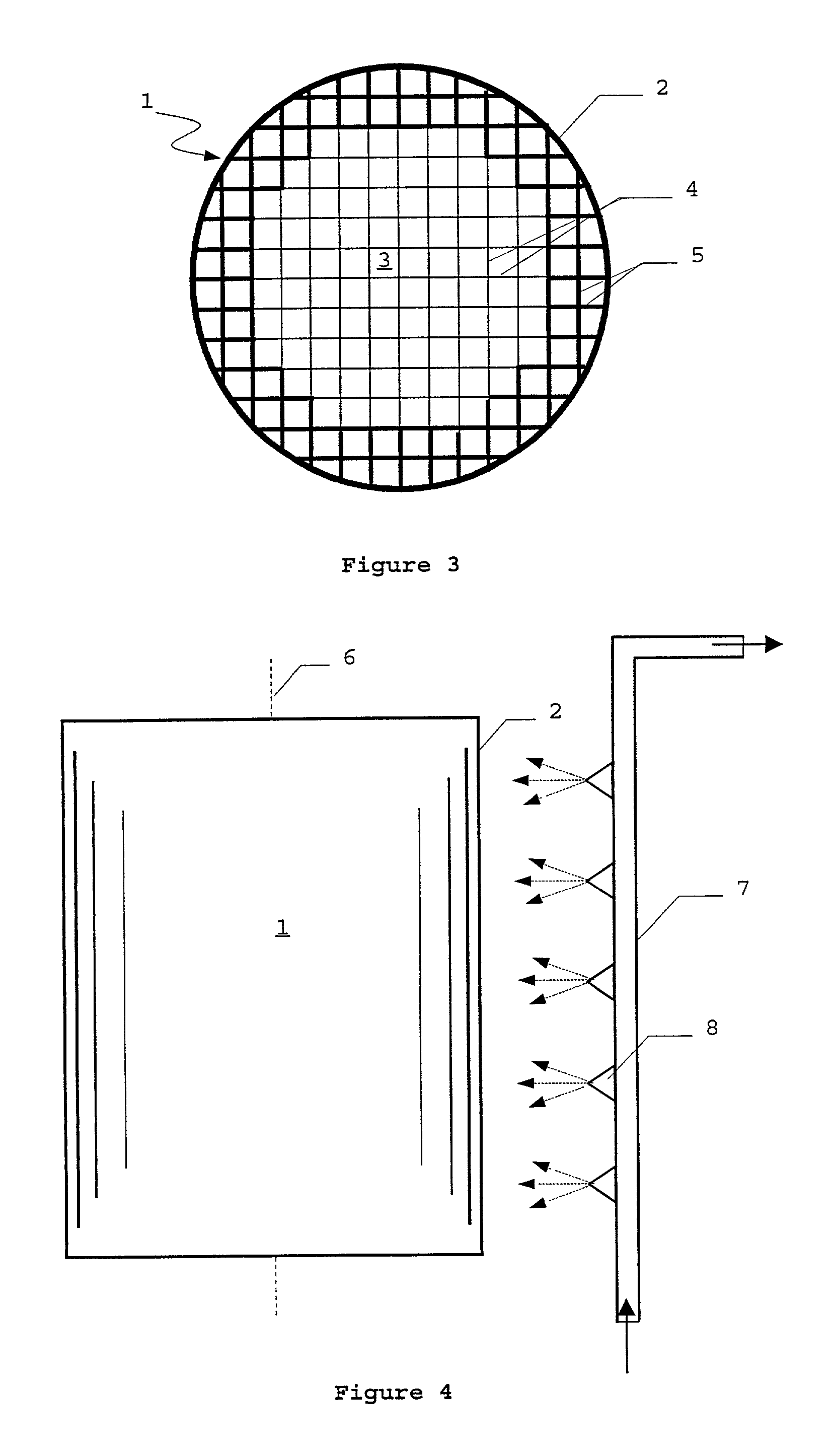Process for coating a ceramic honeycomb body
a honeycomb body and ceramic technology, applied in the direction of catalyst activation/preparation, metal/metal-oxide/metal-hydroxide catalysts, machines/engines, etc., can solve the problem of premature solidification of the suspension in the flow channel, the possibility of obstruction of the flow channel of the high-cell honeycomb body with excess coating material, and the increase of the obstruction of the flow channel of the high-cell honeycomb body
- Summary
- Abstract
- Description
- Claims
- Application Information
AI Technical Summary
Benefits of technology
Problems solved by technology
Method used
Image
Examples
Embodiment Construction
[0024] According to the invention, the suction capacity in the region of the jacket of the honeycomb bodies is at least partially saturated, prior to coating, by wetting the jacket of the honeycomb body. In this embodiment of the process, in contrast to DE 198 10 260 A1, only the jacket of the honeycomb body, and not the entire honeycomb body, is wetted. Whereas according to DE 198 10 260 A1 the coating concentration is reduced in all the flow channels by uniform wetting of the entire honeycomb body, in the proposed process this is only the case in the marginal region. In this way high coating concentrations can be obtained by means of only one coating operation, with a simultaneous reduction in the number of obstructed channels in the marginal region.
[0025] The degree of saturation and the depth of penetration of the wetting can be controlled by those skilled in the art by means of the liquid volume used and optionally by introducing a waiting time between wetting and coating. This...
PUM
| Property | Measurement | Unit |
|---|---|---|
| concentration | aaaaa | aaaaa |
| concentration | aaaaa | aaaaa |
| thickness | aaaaa | aaaaa |
Abstract
Description
Claims
Application Information
 Login to View More
Login to View More - R&D
- Intellectual Property
- Life Sciences
- Materials
- Tech Scout
- Unparalleled Data Quality
- Higher Quality Content
- 60% Fewer Hallucinations
Browse by: Latest US Patents, China's latest patents, Technical Efficacy Thesaurus, Application Domain, Technology Topic, Popular Technical Reports.
© 2025 PatSnap. All rights reserved.Legal|Privacy policy|Modern Slavery Act Transparency Statement|Sitemap|About US| Contact US: help@patsnap.com


